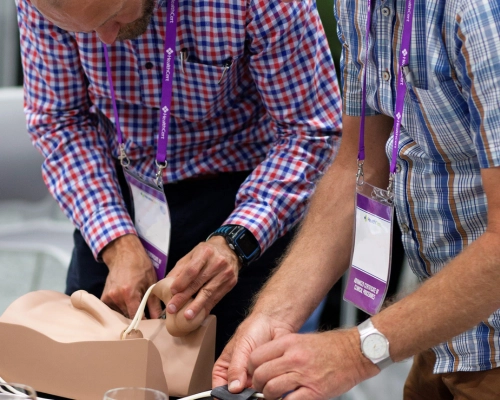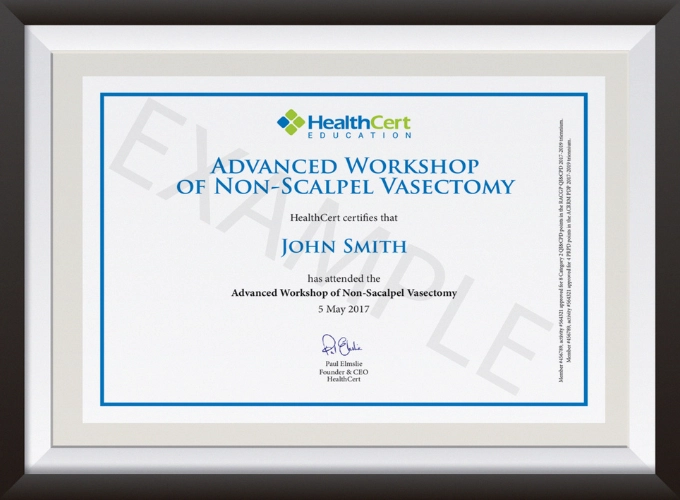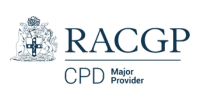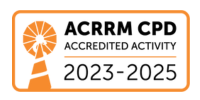Adequate nutrition and hydration are fundamental to musculoskeletal health and athletic...
.jpg?height=200&name=article%20(4).jpg)
Gain an introduction to GP procedures for permanent male reproduction control with no-scalpel vasectomy training in Australia.

The only one of its kind, this workshop will give you the opportunity to practise the no-scalpel vasectomy procedure on simulated models and enable you to consider this advanced method for male reproduction control for your practice.
- This practical workshop is ideal for experienced doctors who regularly perform advanced clinical procedures or already provide traditional vasectomies to their patients but would like to learn the non-scalpel procedure.
- This workshop is for physicians.
- CPD-accredited.
Workshop + online resources
From $2095
Special rates available
9.5 hrs
2026
21 March in Brisbane
19 September in Sydney
- Learn the safety guidelines you need to know to avoid complications before, during, and after vasectomies.
- Plan patient counselling, with an analysis of patient case scenarios.
- Support your male patients with permanent reproduction control and provide a highly sought-after service in men's sexual health with confidence and competence.
- Attract new patients by incorporating non-scalpel vasectomy services into your practice.
Get unlimited access to all course content, additional learning materials, ongoing post-course support, and more.
This session focusses on the various reasons patients may have for considering a vasectomy. The session recognises the clinical set-up and safety rules to avoid complications in non-scalpel vasectomy procedures. The importance of written consent from the patient is emphasized as well as the different aspects to be considered during patient counselling (e.g. the reasons for vasectomy, possible complications as well as pros and cons of the alternative methods like the male pill). Pre-vasectomy evaluation including medical history of the patient, examination and precautions are listed. The session concludes with the clinical set-up of the surgical site (operating room), dose and temperature of the anaesthetic and surgical equipment.
The third session continues with the procedure of a non-scalpel vasectomy, illustrated by clinical images of the surgical steps. Definitions and diagrams of vas occlusion techniques are shown. Discussion opportunities are provided for counselling and other considerations when considering a vasectomy. Case examples include: having a vasectomy at a young age, partner of patient having emotional difficulties, partner of patient enquiring whether the procedure can be reversed, patients not wanting their partners to know about having the procedure done, concerns about the procedure being painful, having a complete family or personal circumstances that would make it difficult of having (another) child(ren).
The final session commences with the management of post-vasectomy care (pain control) and possible complications. These include outlining the causes and symptoms of vasovagal reactions, injuries to testicular artery, haematoma, infections and congestive epididymitis are given, including prevention and treatment of these conditions. Other possible complications are addressed including lidocaine toxicity, bleeding, sperm granuloma and chronic testicular pain. The session also looks at causes, symptoms, treatment and prevention of vasectomy failure and patient concerns regarding vasectomy and risk of prostate cancer. No needle and mini needle vasectomy techniques are described. The session continues by describing the post vasectomy sample test process and the procedure to follow in case the test would be positive. Vasectomy reversal complexities is the last topic in this module.
This practical no-scalpel vasectomy workshop is ideal for general practitioners with an interest in developing their procedural skills, particularly in men’s health or minor surgical interventions.
No prior experience in vasectomy is required.
The workshop provides a structured introduction to the non-scalpel vasectomy technique and is designed to give doctors the foundational knowledge and supervised practical experience needed to determine whether this procedure could be incorporated into their future practice.
It is also suitable for GPs who are considering offering vasectomy services in the future and want a safe, supported environment to explore the clinical and technical aspects before committing to further training or service delivery.

Course Director
Dr Raj Selvarajan, Specialist General Practitioner is a Fellow of the Royal Australian College of General Practitioners, a Member of the Royal College of General Practitioners (UK), and a Member of the Royal College of Surgeons of Edinburgh (UK).
After completing his training in no-scalpel vasectomy, Dr Selvarajan established the No Scalpel Vasectomy Service in north-east England in 2007. He later led the non-profit social enterprise NECHN and set up no-scalpel vasectomy clinics in Tamworth, Midlands, and Leicester City, UK.
With extensive experience in vasectomy procedures, Dr Selvarajan has peer-reviewed other no-scalpel vasectomy services across the UK. He has a special interest in the development and refinement of scalpel-free vasectomy techniques. He currently operates Scalpel-Free Vasectomy clinics in Brisbane and Mackay.
Complete course theory online, then put your knowledge into practice at a weekend small-group workshop.
Bundle two courses and save 5%, or three courses and save 10% upon enrolment.
Talk to us about deferred payment options, registrar scholarships and special rates.
*GST inclusive.

The course taught me interesting and useful new skills. It was an excellent start to learning about vasectomy procedures. The discussion about the cases was fascinating. Raj was informative and explained things clearly.
Dr S. McDonald
This course was very helpful for me. It was a well planned and presented course with hands-on experience.
Dr A. Srivastava
The program was clear, concise, complete, relaxed and educational. Raj was succinct, clear and open to questions.
Dr J. Dalley
The course met my learning needs very well and Raj gave very sensible, practical instructions in vasectomy procedures.
Dr R. Hunter
This was an extremely informative presentation and I highly recommend this course to others. Raj gave a good explanation on practical points.
Dr M. Jozwik
The Advanced Workshop provided a good balance of technique practise and safety/ethics. Good value, and good choice of passionate, skilled tutors.
Dr D. Bartrum
It was a great presentation and I think others would find it useful.
Dr H. Coombs
| RACGP Activity Number | ACRRM Activity Number | Activity Title | Education Hours | Performance Hours | Outcome Hours | ||
|---|---|---|---|---|---|---|---|
| 483130 | Advanced Workshop of Non-scalpel Vasectomy | 483130 | 3 | 6.5 | 0 | ||
| Total hours | 3 | 6.5 | 0 | ||||
The Advanced Workshop of Non-Scalpel Vasectomy is for physicians who are already performing traditional vasectomies but would like to learn the non-scalpel procedure. Participants can expect an introduction to this advanced procedure for permanent male fertility control with a comprehensive overview of the necessary steps to achieve the best outcomes for their patients.
The program assumes previous experience in clinical procedures.
Participants do not have to pass an IELTS test but, as the courses are delivered in English, proficiency in listening, reading and writing English is assumed.
Participants will require access to a computer/laptop, an internet connection and a basic level of technology proficiency to access and navigate the online learning portal.
Professionally recognised qualifications and prior studies may be recognised for entry into this course if the learning outcomes match exactly. Please ask a HealthCert Education Advisor for an individual assessment of your prior qualifications and experience.
Upon completion of the workshop, participants should:
before considering this procedure for your patients.
Upon successful completion of the course requirements, course participants will receive the Advanced Workshop of Non-Scalpel Vasectomy certificate.
This advanced workshop:
To learn more about the delivery of certificates in Australia and overseas, please visit our FAQs.
Upon completion of the workshop, HealthCert recommends further clinical training for doctors without prior experience in the field, to ensure patient safety and for medico-legal purposes.
Further studies
You may be interested in furthering your skills in fertility control with the Advanced Workshop of Intrauterine Systems. HealthCert also offers an online Professional Diploma program in Men's Health.
Clinical attachments
If you are a HealthCert Advanced Workshop of Non-Scalpel Vasectomy alumnus, you can access a significant discount of $6,000 off the associated clinical attachment with Dr Raj Selvarajan. In this clinical attachment you will have the opportunity to gain excellent first-hand practical experience and insight at the clinic of Dr Raj Selvarajan.
Please download the flyer to learn more.
To register, please email Skills For Medics at admin@skillsformedics.com
This organisation is an RACGP-accredited CPD provider under the RACGP CPD Program.



Don't see your question? Explore other faqs or talk to us.
The workshop provides a structured introduction to the non-scalpel vasectomy technique and is designed to give doctors the foundational knowledge and supervised practical experience needed to determine whether this procedure could be incorporated into your future practice.
It is suitable for GPs who are considering offering vasectomy services in the future and want a safe, supported environment to explore the clinical and technical aspects before committing to further training or service delivery.
If you wish to build your skills further, you can arrange a clinical placement with experienced providers.
No — our approach gives you full control! Unlike fixed, bundled placements, HealthCert’s flexible model empowers you to choose when, where, and with whom you complete your clinical placement. You can start your education immediately without waiting for placement availability, and there is no pressure to commit to hands-on practice until you're ready.
The one-day weekend workshop runs for 9.5 hours.
Fees will vary based on the program and study option selected (fully online vs online + optional practical workshop). Payments can be made upfront or in monthly instalments. Special rates and various payment options are available. GP registrars and doctors in training enjoy a scholarship of up to $500. Talk to us to learn more.
Completion of any HealthCert course or attendance at an event will enable you to access the HealthCert Alumni Program which includes:
HealthCert Education is pleased to issue digital credentials for alumni. Digital credentials are a permanent online record of your successful completion of a HealthCert course and are issued to all course participants in addition to PDF certificates. If you are based in Australia, you also have the option to order a hard copy of your digital certificate for a small additional fee.
The recommended study duration of this certificate course is 9.5 hours, which includes study of the pre-course activities and readings, the one-day workshop, and the online assessment.
All HealthCert courses meet World Federation of Medical Education standards. This certificate course qualifies for CPD hours from the Royal Australian College of General Practitioners (RACGP) and the Australian College of Rural and Remote Medicine (ACRRM) in Australia. It is recognised by the Royal New Zealand College of General Practitioners (RNZCGP) in New Zealand. It is recognised by the Hong Kong College of Family Physicians (HKCFP) in China. It is a self-submitted activity in Dubai and the United Kingdom. It is a self-submitted activity through the College of Family Physicians in Canada. If you live or work outside one of the above-mentioned countries, please contact us on admin@healthcert.com to discuss whether this course can be recognised in your country.
Want to stay up-to-date with the latest case studies, podcasts, free video tutorials and medical research articles pertinent to primary care?
Our Education Advisors can assist you with any queries and tailor our education pathway to suit your current expertise, interests and career goals.